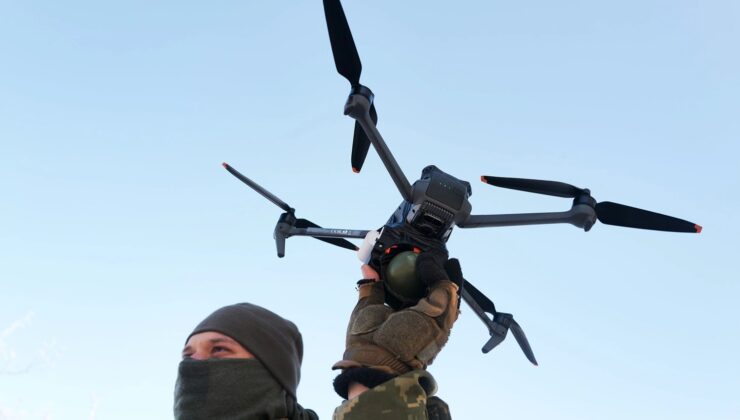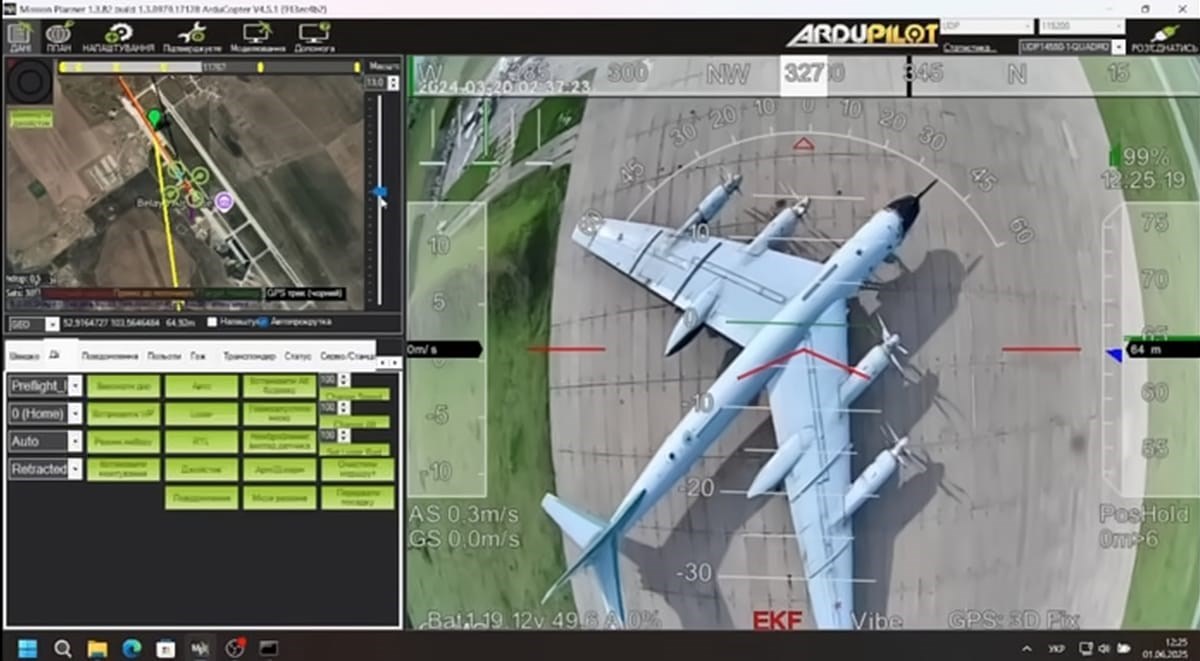

Ukraine recently carried out a significant drone strike on Russia‘s long-range strategic bombers, effectively neutralizing a third of these formidable aircraft. This remarkable operation was achieved using the open-source software ArduPilot. The attacks were launched in broad daylight at the air bases of Belaya, Olenya, and Ivanovo, deep within Russian territory. The level of technical coordination and operational precision displayed was extraordinary. Code-named Operation Spider Web, this mission was the culmination of nearly 18 months of meticulous planning by the Security Service of Ukraine (SBU).
Central to this operation was the ArduPilot software, a product of collaborative development that began almost two decades ago. Reactions from the ArduPilot Community Even the creators of ArduPilot were astonished by the software’s use in such a high-profile military context. “I launched ArduPilot from my basement 18 years ago,” remarked Chris Anderson, a co-founder, on LinkedIn alongside images of the attack. “It’s absolutely surreal,” he continued. Jason Short, another co-founder, shared on platform X, “I never imagined in my wildest dreams that this would be the outcome. I just wanted to create flying robots.”

From LEGO Innovations to Warfare Applications The origins of ArduPilot are quite remarkable. Founded in 2007 by Chris Anderson, the project began as an experiment using a Lego Mindstorms kit to develop the first drone autopilot system. What started as a simple experiment evolved into a thriving open-source community of drone enthusiasts and professionals worldwide. By 2009, ArduPilot had released its initial version, and since then, it has grown into a robust and adaptable software suite. ArduPilot now has the capability to control not just drones, but also fixed-wing aircraft, boats, submarines, and even unmanned ground vehicles.

While ArduPilot promotes the development of autonomous systems for peaceful purposes, Ukraine’s military use of the software highlighted the potential boundaries of open-source technology. Notably, an analysis of ArduPilot’s website traffic in 2023 revealed a significant number of visitors from both Ukraine and Russia.
The Impact on Modern Warfare Ukraine’s recent drone strike inside Russia not only targeted strategic locations but also reshaped perceptions of contemporary warfare. It underscored the potential of small, commercially available drones to serve as effective military tools. Although Ukraine has previously utilized consumer-grade systems against Russia, this latest attack was part of a simultaneous tactical maneuver covering numerous regions. It demonstrated the logistical and strategic capabilities of open-source software in conducting complex military operations.
The developers behind ArduPilot have pledged not to support the transformation of their software into weaponry. However, as an open-source project, ArduPilot is freely available for download, modification, and redistribution. On the battlefield, the reality is clear: this software is being leveraged to destroy costly strategic bombers at a fraction of the cost. According to Russian military bloggers on Telegram, these drones were equipped with small computers running ArduPilot (such as Raspberry Pi) and communicated via mobile networks within Russia.
One of the most surprising aspects of the attack was the vulnerability of the Russian bombers, which had been parked in open rows for nearly 30 years, without even the protection of a hangar. This oversight revealed a significant intelligence and security lapse, facilitating Ukraine’s planning and execution of the operation.
SİGORTA
2 saat önceSİGORTA
19 saat önceBİLGİ
3 gün önceSİGORTA
4 gün önceSİGORTA
7 gün önceSİGORTA
12 gün önceSİGORTA
14 gün önceSİGORTA
14 gün önceSİGORTA
15 gün önceSİGORTA
18 gün önce 1
DJI Mini 5: A Leap Forward in Drone Technology
20186 kez okundu
1
DJI Mini 5: A Leap Forward in Drone Technology
20186 kez okundu
 2
xAI’s Grok Chatbot Introduces Memory Feature to Rival ChatGPT and Google Gemini
14196 kez okundu
2
xAI’s Grok Chatbot Introduces Memory Feature to Rival ChatGPT and Google Gemini
14196 kez okundu
 3
7 Essential Foods for Optimal Brain Health
13040 kez okundu
3
7 Essential Foods for Optimal Brain Health
13040 kez okundu
 4
Elon Musk’s Father: “Admiring Putin is Only Natural”
12898 kez okundu
4
Elon Musk’s Father: “Admiring Putin is Only Natural”
12898 kez okundu
 5
Minnesota’s Proposed Lifeline Auto Insurance Program
10762 kez okundu
5
Minnesota’s Proposed Lifeline Auto Insurance Program
10762 kez okundu
Sigorta Güncel Sigorta Şikayet Güvence Haber Hasar Onarım Insurance News Ajans Sigorta Sigorta Kampanya Sigorta Ajansı Sigorta Sondakika Insurance News